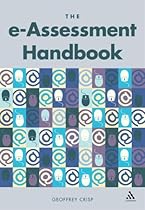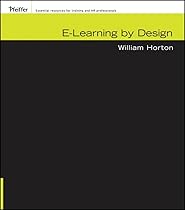In
Part 4 I discussed if e-records as part of decision making in eGovernment and eBusiness. The program of courses entitled "
System Approach to Management of Government Information" are now being offered, so I tought I should look at tidying up my content to get ready.
One option I would like to try is using a
course management system (CMS). Not because the students will be studying on-line remotely, they will be on the campus at live sessions, but because it might be a useful way to make sure the material is well structured.
The
Moodle product looks like a good option; it is Australian developed, free Open Source, and people keep mentioning it to me. The ACS use it for their new
Computer Professional Educational Program and appears to be going well (thankfully as I am in charge of
Professional Development at the ACS as of 1 January 2007).
The Moodle people claim it is based on "sound pedagogical principles", specifically "
social constructionist pedagogy". Which they say involves: Constructivism, Constructionism, Social Constructivism, Connected and Separate.
Constructivism says you have to integrate what you are learning into what you already know.
Constructionism says you learn better if you have to do something with the knowledge. For example I am writing this as I read about Moodle and so I am learning by having to write about it.
Social Constructivism is about a group assembling ideas. As an example when people respond to what I have written and suggest changes.
Connected and Separate is about understand the person's other point of view versus being "right": people will point out spelling errors in what I wrote (Separate) and others will suggest better ways to word it (Connected).
I am not sure how widely accepted these concepts are (it is all new to me), but it seems these are really two ideas:
Learning through doing and
working together.
Most computer based learning systems seem to be designed to support an isolated individual learning "facts". This would be Separate non-Constructivism in Moodles' language.
With that out of the way, lets look at Moodle, the software. It is released under a
GNU General Public License, so it can be freely used and modified (free as in beer and speech). It is written in PHP and requires an SQL database to hold the content.
There are roles defined for admin, course creators, teachers , non-editing teachers (ie: adjuncts and tutors) and students. Moodle uses much the same software and philosophy as Open Journal Systems for
e-publishing. There the roles are administrators, editors, reviewers and readers.
CMS systems are mostly about
administering a course, not creating
learning content. The CMS is used to keep track of the students, learning materials and activities (such as assignments). They are not about creating the actual materials the students read. This is much the same as e-publishing systems don't help you write a document, just publish it.
The current release of Moodle was 1.7, but
Version 1.8 is just out (January 2007). This is supposed to have improved web
accessibility features. They are specifically aiming for compliance with
Italian Legislation on Accessibility. I am not exactly sure what that legislation covers, but it is likely to be much the same as Australian requirements under the Disability Discrimination Act and involve use of the W3C WAG, as used
worldwide.
The Moodle developers are also aiming to implement XHTML Strict (after some
debate). Use of XHTML Strict will help with accessibility and make for very clean and efficient web pages. It should also make it possible to use them on
hand held devices, such as my
proposed learning PC for developing nations and for different languages.
There is a Wiki with
extensive documentation about using Moodle. Each Moodle course created has a
course homepage, which is the place the students first come to. The home page has a typical Wiki style with
blocks of mostly text laid out in columns.
The course can be formed of
sections, usually in an order which the students work their way through (each week for example). Moodle has its own
web based editor, including a "Clean Word HTML button" to remove extranious code from HTML which has been generated by Microsoft Word.
A course consists of essentially of
resources and activities. A resource will typically be a web page with some content on it, a link to some content web based content somewhere else. At this point you realize the CMS doesn't write the course for you: the actual content you are teaching has to be somewhere. It might be on web pages, in PDF documents, or Powerpoint slides.
The content might be in an
IMS content package. This is a standard format for learning content which is also supported by other CMS systems such as
Web CT. An IMS Content Package is a Zipped directory of XML files, much like the
OpenXML and Open Office word processing formats.
Exactly how you create a package, (with Moodle?) or how standardized they are between different
CMS systems I am not yet clear on. But it appears to work as the government funded
Australian Flexible Learning Framework has dozens of IMS content packaged learning objects in its
Flexible Learning Toolboxes. These can be
previewed online.
There are a bewildering array of standards underlying these systems, most of which the user never has to know about. As an example IMS uses a different metadata format to describe its learning objects to the IEEE Standard for Learning Object Metadata
IEEE Std 1484.12.1-2002 (which I get a mention in, as I was on the balloting group). So IMS provide a set of
Guidelines for Using the IMS LRM to IEEE LOM 1.0 Transform to turn IMS metedata into IEEE metadata using
XSLT transformations.
Labels: Australian Flexible Learning Framework, CMS, course management system, edocument elearning course, education, Electronic Records Management, Electronic repositories, flexible learning centre, How to Create On-line University Courses in Electronic Archiving, Information Management Course, universities





